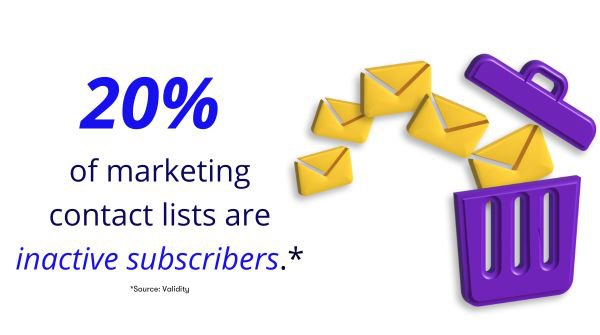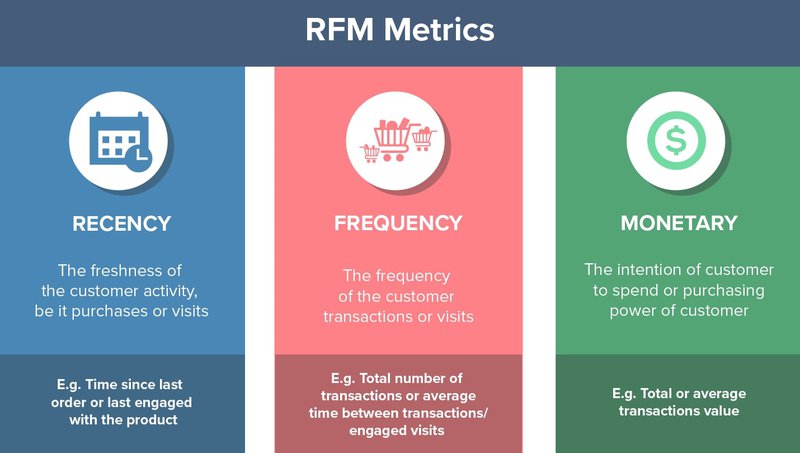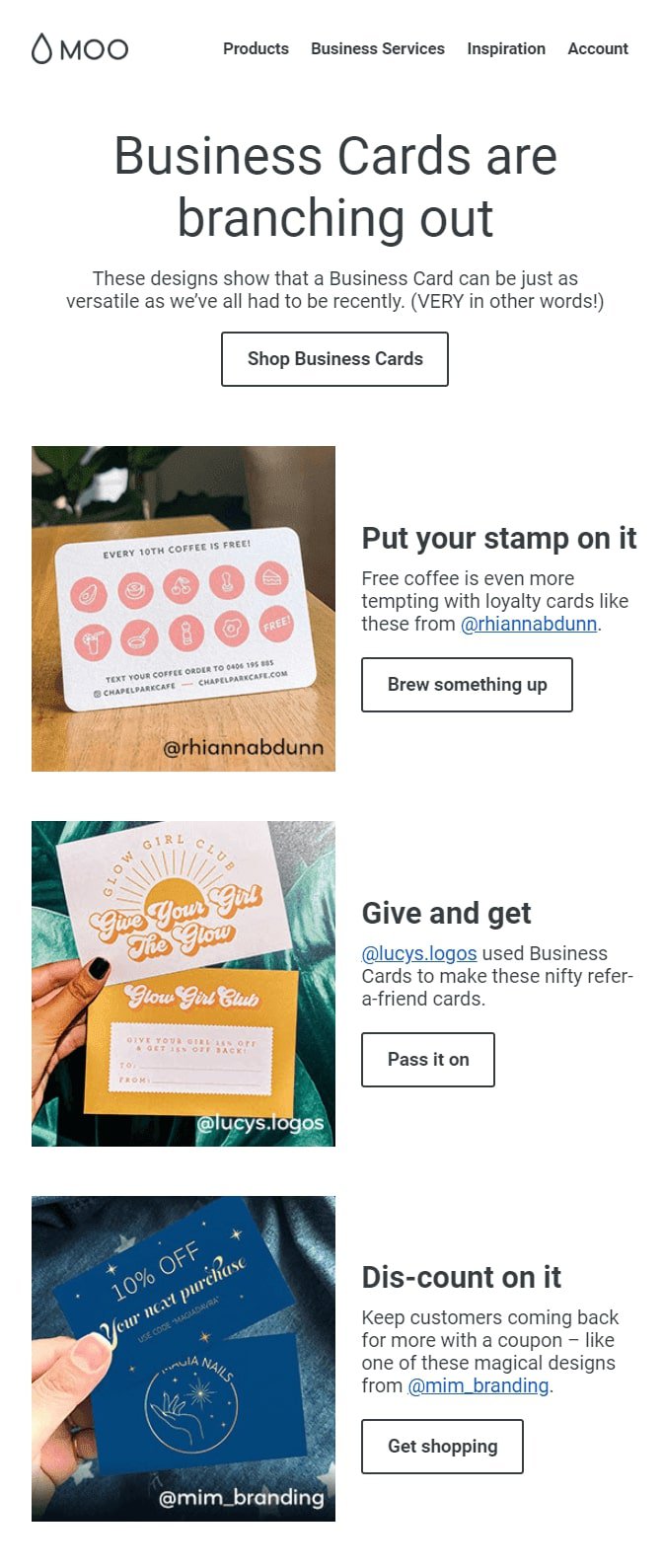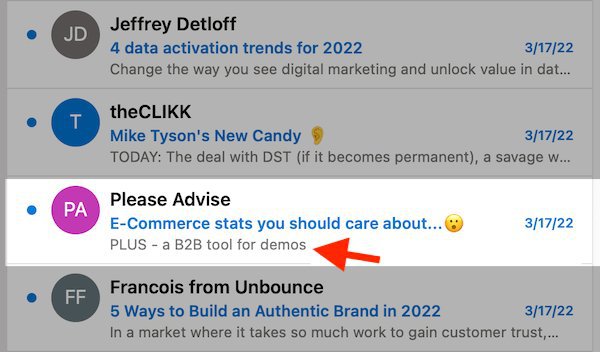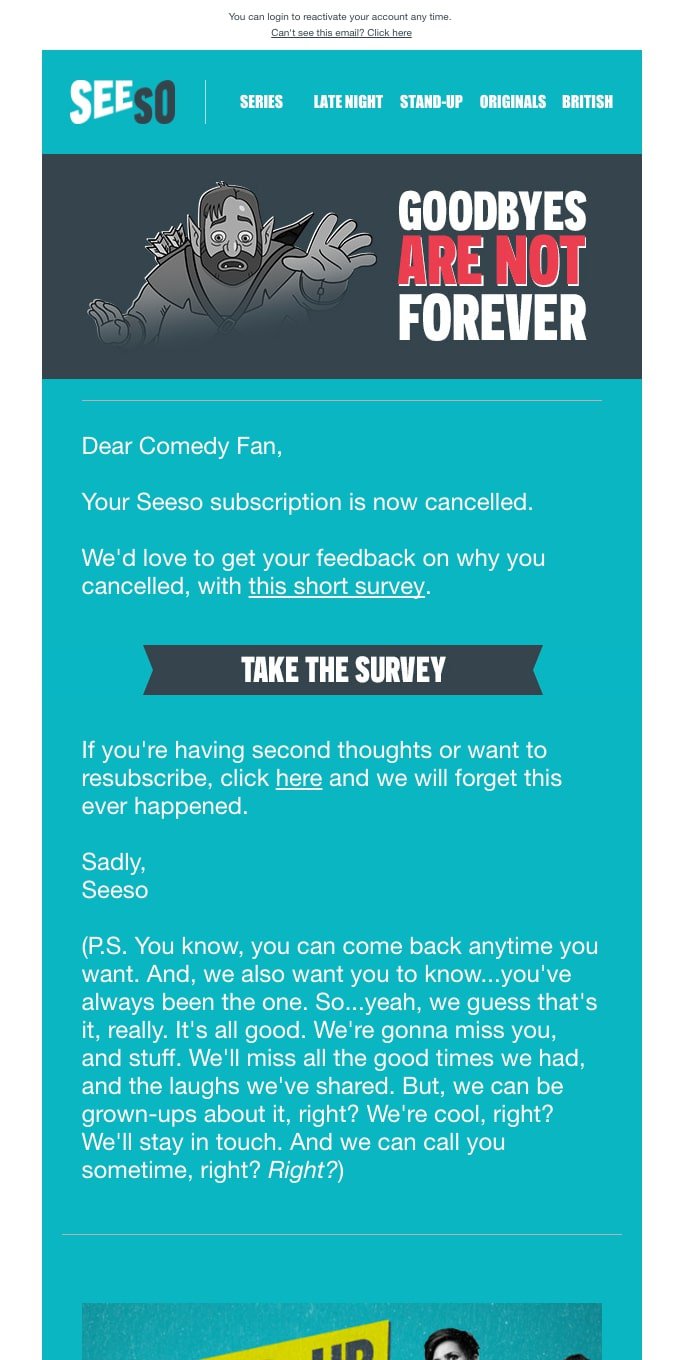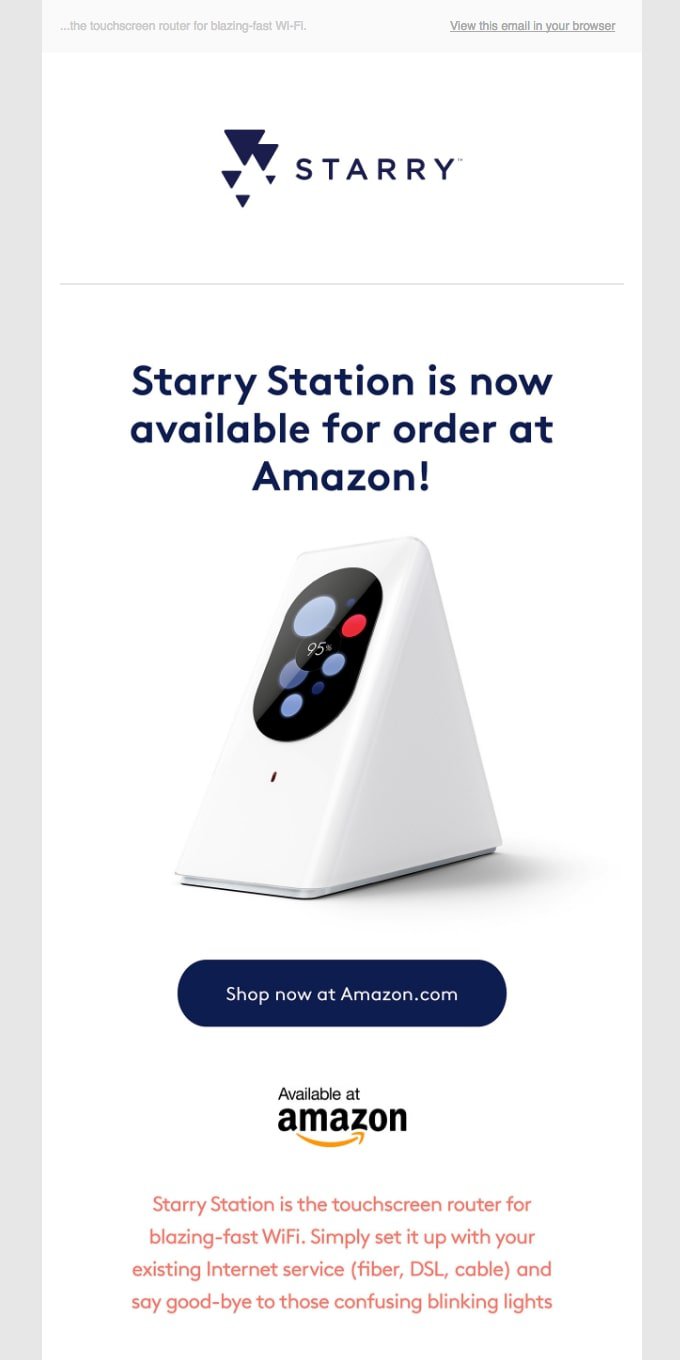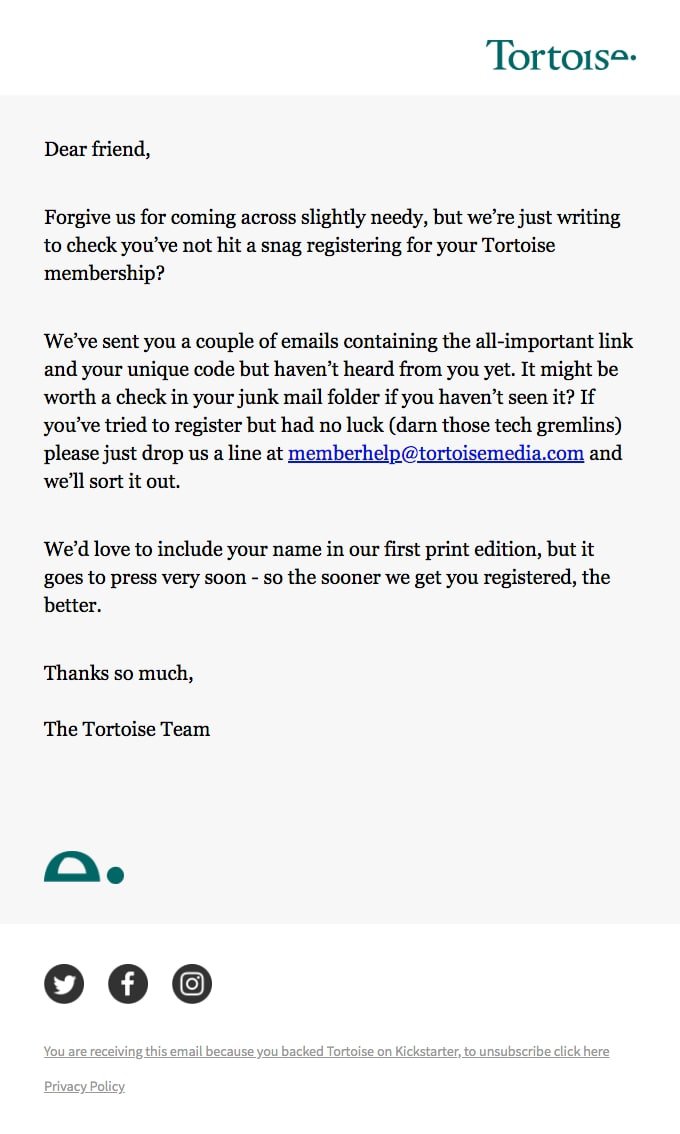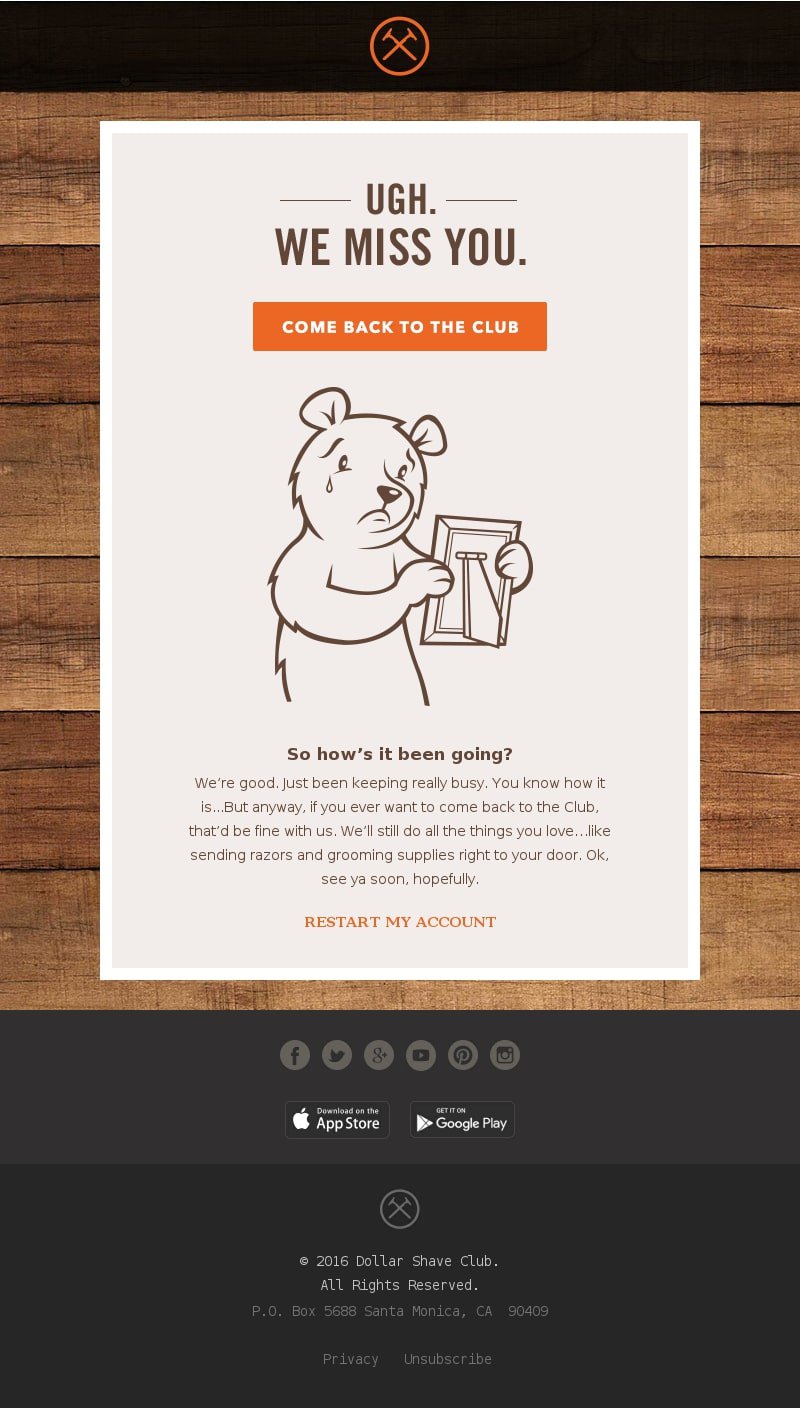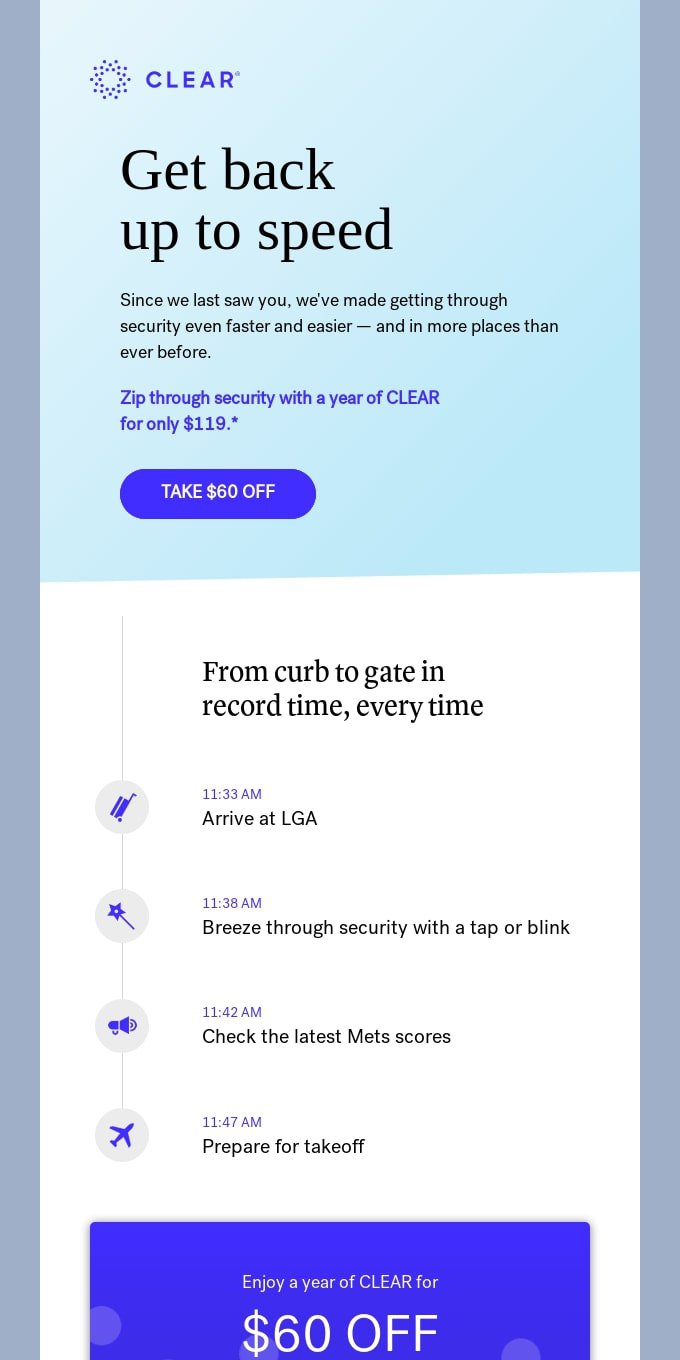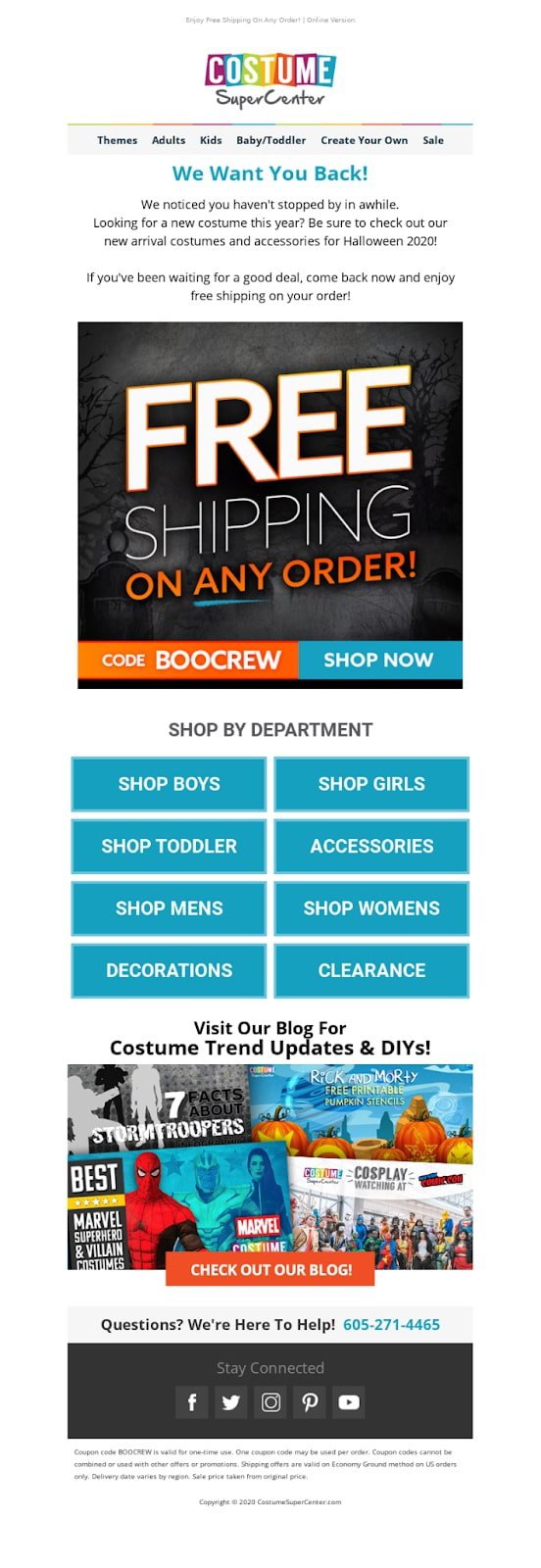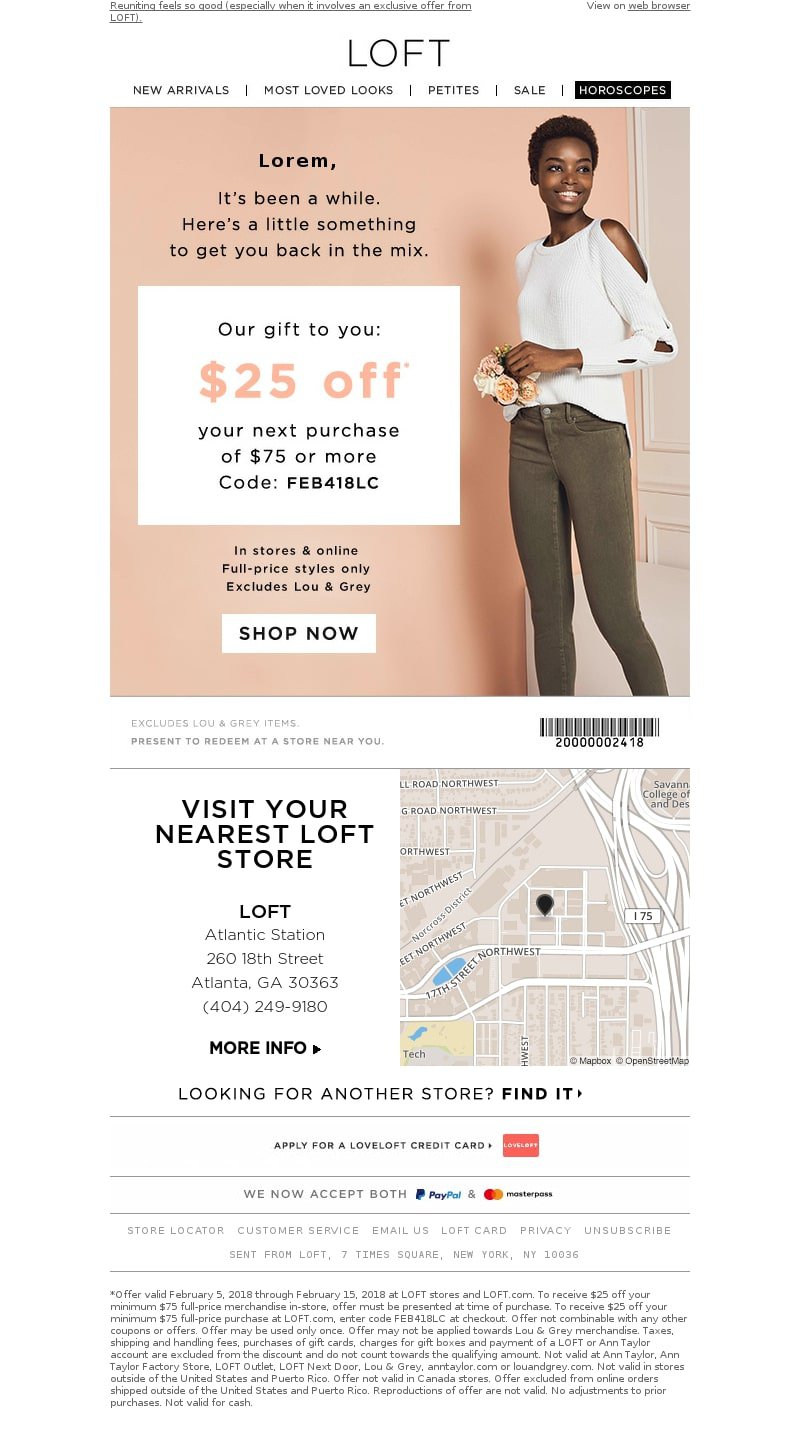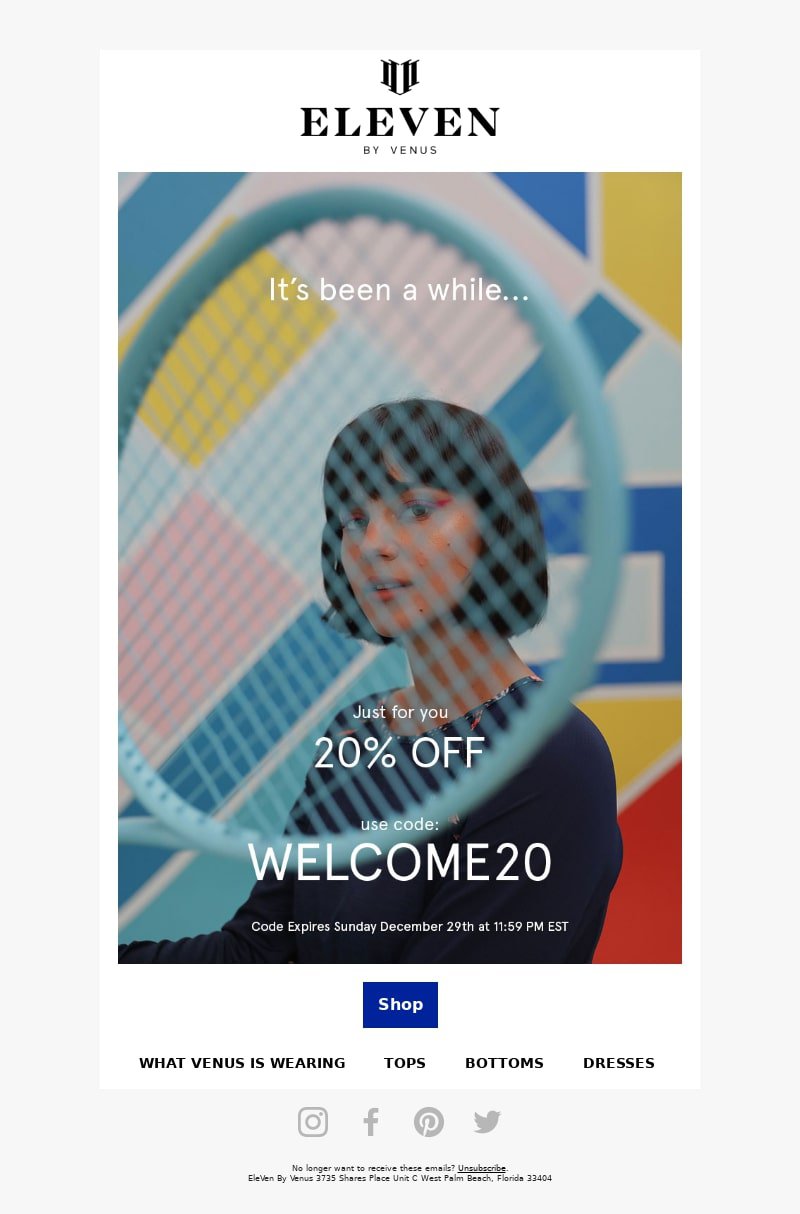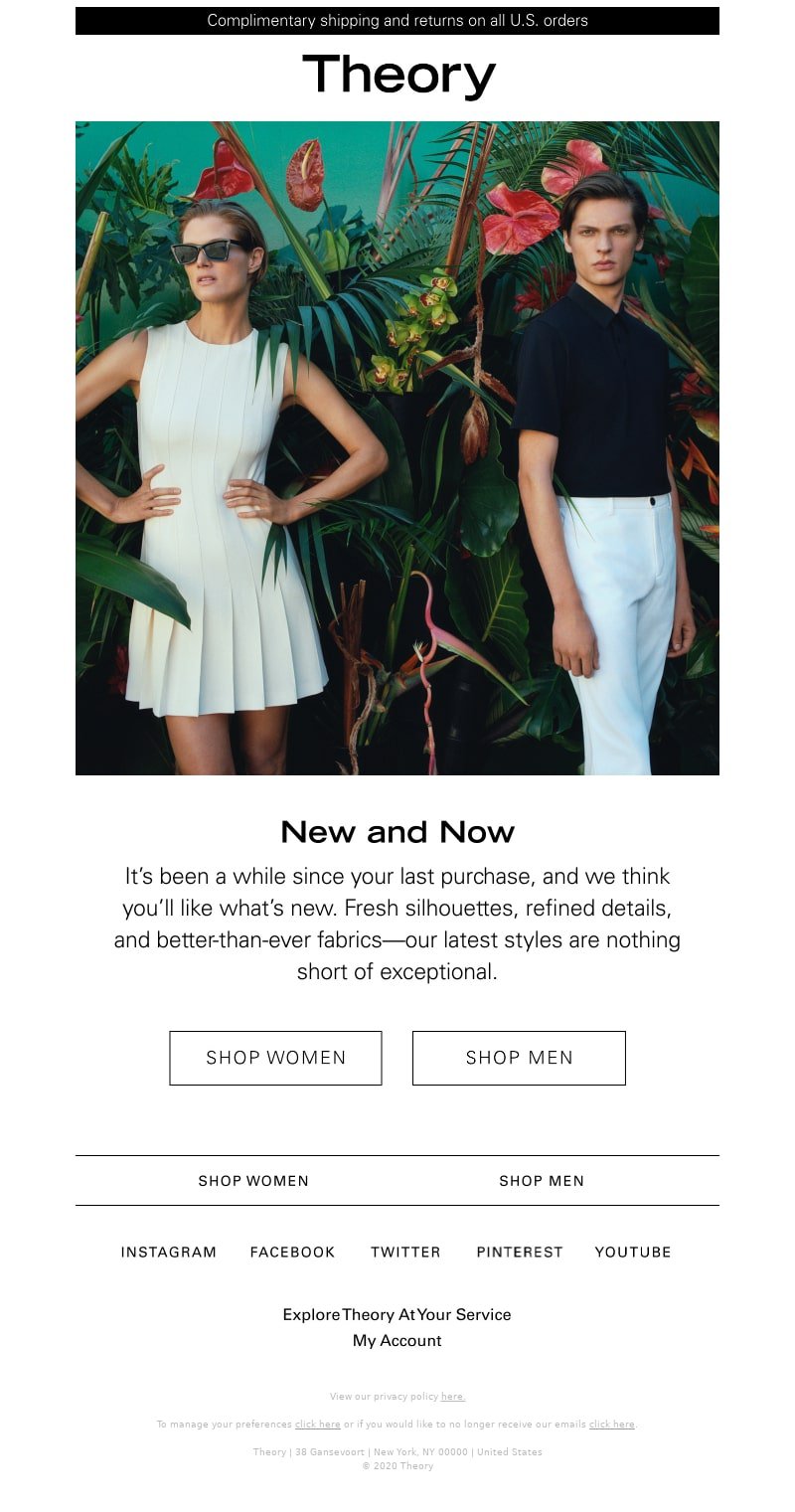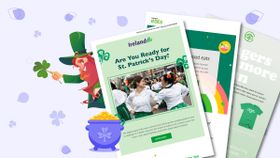8 Winback Email Tips to Remind Customers Why They Love You
Customers can fall out of touch, but that doesn't mean you should give up. Find out how and why winback emails must be included in your strategy STAT.
Updated November 5, 2024

What Is a Winback Email? Everything You Need To Know
New and high-quality email contacts are the ultimate reward for businesses that run effective marketing campaigns. After a while, though, some will inevitably interact with your brand less and less, while others will stop engaging entirely.
When that happens, it’s up to you to salvage the high-value contacts among inactive subscribers.
Winback emails are one of the most effective solutions to re-engage inactive subscribers. They’re easy to implement, help you run your email campaigns more efficiently, and maintain good deliverability.
In this article, you’ll learn everything there is to know about winback emails.
What is a winback email?
A winback email is a type of email sent to existing but inactive customers to reengage and keep them interested. By launching a winback email campaign, you can lower your unsubscribe rate and also get the chance to convert inactive email subscribers into loyal customers.
How to create the perfect winback email
As long as an email contact has not hit the unsubscribe button, an email marketer still has a chance to convince them to re-engage. A win-back email presents the opportunity to do so, which is why it must be done well.
So how do you create a perfect winback email?
Identify disengaged customers
The first step is identifying the inactive contacts in your email list. Start by reviewing your customer interaction history and find contacts who haven't engaged with your brand in a while.
This is a hard task to achieve manually, so enlist the help of great software that provides email marketing services like marketing automation and email analytics. These will help you build accurate individual contact profiles and efficiently monitor engagement rates.
Review your customer engagement data and classify passive subscribers into these three categories:
- 90 days: These subscribers have started to lose interest in your brand.
- 90–120 days: Subscribers are at a high risk of becoming lapsed customers.
- 120–180 days: The subscribers have officially lapsed and no longer interact with your brand.
Customers are generally considered inactive after three to six months of inactivity. However, this will vary depending on the buyer's journey and the nature of your product or service.
For instance, if you sell products designed to hold up for years like refrigerators, even 180 days of inactivity will not be considered a lapse.
Test your timing
Experiment with different sending time spans, until you find the perfect one.
And you don't have to rely on a simple hunch to get started. Begin with the average timeframe within which most of your customers make a repurchase. You can also hire an email marketing consultant to help you find more accurate and informed email sending times.
Segment your email list using RFM analysis
Don’t just segment your email list according to how long they’ve been inactive. Segment your list by applying the recency, frequency, and monetary (RFM) analysis as well.
This analysis looks at how recently the customer interacted with your brand, how often, and their monetary value. With the RFM analysis, you can identify your most loyal and valuable inactive contacts who are worth pursuing for longer.
The customer segmentation process is easier with an email marketing platform. You also have the option of hiring email marketing professionals. For instance, if you’re running a winback campaign for an eCommerce store, consider eCommerce email marketing agencies.
Send follow-up sequences
Your contacts may get busy and forget about your brand. So instead of sending a simple reminder or a single email and leaving the re-engagement probability to chance, build a winback email campaign with three to five emails.
You can use email marketing automation tools to streamline your email workflows. For instance, with automated workflows, contacts will only receive follow-up emails if they don’t take your desired action in your first re-engagement email.
Include social proof
By including social proof in your winback email, you show recipients how satisfied customers are with your product. This will then help rebuild your inactive customer’s trust in your brand.
Examples of social proof you can use include positive reviews, ratings, testimonials, or endorsements.
Include a CTA
A CTA helps your audience understand how you want them to re-engage with your brand.
Ensure your call-to-action button is conspicuous by having it in a different color and including enough white spaces. The CTA text should also have strong action verbs to compel readers to take action.
A/B test email variations
A/B test different variations of your emails to find the perfect and most effective winback email design. Some email design elements you can A/B test include your subject line, CTA, images, and incentive.
Once you’ve found your winning variation, create a template and follow it consistently. Your template could also be a perfect starting point for your next email campaign.
Some email marketing tools offer an A/B testing feature; be sure to check for that while choosing a platform.
Analyze & adjust winback campaigns
To ensure the success of your re-engagement email campaigns, continuously analyze and adjust your winback campaigns. This way, you can invest more in working strategies and make necessary changes to improve email marketing results.
Some key metrics you can monitor to help you analyze your campaign performance include your email open rate, bounce rate, conversion rate, and click-through rate.
Top 8 best practices for a winback series
To ensure the success of a winback email series, business owners or even email marketing agencies should follow certain best practices:
1. Use an attention-grabbing subject line
Winback email subject lines are the first thing your recipients see, so they need to be eye-catchy and compelling.
To write a great win-back email subject line, keep it short, interesting, and personalized to entice the reader to open the email. Include phrases like “We miss you” or “Please come back.” You can also include email preview text to inspire more clicks.
2. Personalize your emails
Personalizing your customer win-back email shows your inactive customers that you value them.
You can personalize your winback emails by using the recipient's name. Additionally, personalize your offers to match each recipient’s interests.
3. Emphasize the value of your offer
Your customers need to know what's in it for them. Use your winback email to emphasize what value customers stand to gain by re-engaging with your business.
For example, you could offer a discount code available for a limited period of time – just keep in mind that product incentives can only get you so far.
It's important to also underline the value of your product range and remind your audience of your brand’s unique value proposition. Doing this may help ease any doubt a customer may have about re-engaging.
4. Tap into FOMO
People don't like missing out. That's why tapping into that with limited-time incentive emails is an effective strategy.
Take care to avoid misusing this tactic. Always having urgent and limited-time offers will only make your emails look spammy and therefore, ineffective.
5. Always include an unsubscribe button
Unfortunately, winning back all your disengaged subscribers is impossible. That's why you should always include an unsubscribe button in all of your email journeys to allow people to leave your email list.
Losing subscribers may seem like a problem, but, together with an email finder that can verify emails, it’ll help you keep your list clean. You can also start working on getting new high-quality contacts instead of trying to save lapsed subscribers.
And if you're using an email platform where you pay according to the size of the audience, this could mean significant savings on your monthly bill.
Remember to send an unsubscribe message or confirmation email to inform them that they’ve been successfully removed from your email list.
6. Ask for feedback
Not all lost customers are a lost cause. Some uninterested recipients may be willing to provide feedback that can inform your future email strategies and reduce customer churn. Therefore, provide an opportunity for customer feedback, as Seeso did:
Make sure the feedback follow-up email is short and to the point, and ensure the survey questions are also clear and concise for a higher completion rate.
7. Keep your message short and sweet
Short email content will give you a higher chance of getting your audience's attention. Therefore, only include the key details and keep your copy interesting. Use humor that's aligned with your brand and add visuals to boost recipients' reading experience.
8. Provide the option to re-engage on multiple channels
Some email contacts may prefer to use other communication channels to engage with brands. You can use your winback email to get them to their preferred platforms.
For instance, you can promote your newest blog post via email to get them to your website. Complement this with content optimization tactics to get the most out of your website content.
You can also promote your social media platforms via email so your subscribers will become your followers and engage with you there instead.
15 winback email campaign examples
Lost for ideas on what to include in your winback email flow? Here are some ideas to inspire you:
1. Offer alternative ways to buy
Notifying previous customers of alternative ways to buy your products is a great way of giving them a gentle nudge to buy from you again:
Your email recipients may not want to buy your products from your store, but they might be willing to buy from a site they already use, like Amazon.
2. Send multiple emails
In most cases, building a winback email sequence is more efficient than sending a one-off email. Done right, email automation can help you convince inactive customers who are on the fence or simply unsure if this is the ideal time to buy from you again.
You can tell just from the content in this Tortoise example that it’s not the first email they’ve sent this subscriber.
The content in each email in your series can vary. A SaaS marketing agency can send promotional and educational emails, followed by promotional communication and a reminder email.
3. Use humor to capture their attention
Dollar Shave is known for its witty brand voice. In the re-engagement email example below, recipients will be enticed to read right from the headline:
The rest of the email body is also funny but clear. Such an email might move inactive contacts to restart their accounts and go back to your selection of products.
4. Include a hard-to-refuse offer
Subscribers are more likely to open an email when given an offer they cannot refuse. This Clear email is a great example of such a winback email:
A 60% discount is quite the offer that most customers can’t ignore. Additionally, Clear notes that they’ve improved their services which will make the offer worthwhile.
5. Inform customers about the option to stop services
Reminding your contacts that they can opt out of an email subscription anytime, or stop your services, gives them the power of choice. This can be enough to encourage them to give you another shot.
Check out how Netflix does it:
However, notice the email still focuses on encouraging the contact to rejoin. See the clear “rejoin in 1 click” CTA and appealing images of the currently popular shows.
6. Include your offer in the email subject line
Including offers in your email subject line will encourage your email contacts to open the email to learn more.
This Italic email subject line does so effectively:
Besides the offer, it includes phrases like “Don’t miss it” and “limited edition”, which will further entice the recipient by suggesting the discount is available only for a limited time span.
7. Reengage inactive contacts with a seasonal campaign
Switch up your win-back emails by matching certain seasons and holidays. However, ensure your product offerings match the season.
For instance, this Costume SuperCenter email offers customers what they need for Halloween costumes and accessories.
The free shipping offer and discount code are also a plus.
8. Suggest a wide range of products
Remind passive subscribers of products they liked and introduce new relevant ones they may love, as Bokksu does.
Featuring different products can help the contacts discover a product they want but didn’t know about before.
9. Send updated product suggestions
Alternatively, you can provide product recommendations to your inactive email contacts based on their past purchases. You can tell from the Allen Edmonds example below that the recipient is interested in their shoe section:
Hence, sending a winback email with their bestsellers and recommendations for new arrivals will definitely encourage recipients to open the email.
10. Personalize emails by mentioning the customer's name
A personalized message shows customers your business genuinely cares about them and how essential it is for you to maintain a healthy, human-to-human conversation with them.
So entice your inactive customers to read your email by using their name like Mistobox does above.
11. Invite contact to stop by your stores
Encourage your subscribers to visit physical stores to get a better feel of your products. Loft uses customers’ location data to suggest the nearest store:
Loft also makes it easy for recipients to find the store of their choice by including a link to their store locator.
12. Promote a gift
A gift is as enticing as discount coupon codes. It might be what helps you win over your customers.
It should remind customers what your business can offer them, so it needs to be connected to your services or products.
The Cat Lady Box, for instance, offers their disengaging customers a cat night light, which matches their cat products theme.
13. Promote free shipping
Offering inactive contacts free shipping is a great strategy. Customers are likely to make a purchase if they’re saving on shipping fees.
Justballgloves, in the example below, emphasizes the advantage of their free shipping offer numerous times in their email.
They also provide information on their different glove options and their 24/7 customer service, which will attract customers even more.
14. Create a sense of urgency
Limited-time offers create a sense of urgency that encourages inactive contacts to act.
The Eleven example below does this by giving a one-day offer.
The offer will encourage recipients to act fast so they don’t miss out, leading to high open and click-through rates.
15. Speak to your audience directly
Speaking to your disengaged subscribers directly, as Theory does below, is also an effective way of getting their attention:
However, you must also give them a reason to continue buying from you. Theory does this by mentioning the changes in their clothes’ materials and styles.
Unlock email marketing performance
Customers come and go – and that's a harsh fact of life and business.
However, just because some of your customers haven't engaged with your business in a long time, it doesn't mean they aren't interested anymore.
Most times, customers just get busy or forget about your products. When that happens, running a winback email campaign can bring them back into your store.
Winback emails are not magic, for sure. Yet, done right, they can encourage repeat purchases, boost your customer lifetime value (CLV), and grow your business at a lower cost. Want to work with an email marketing expert? Get started today!
FAQs
How do you write a winback email?
To write a winback email, emphasize the value of what you offer. Also, find the right time to send your emails, personalize them, and make sure your subject lines are optimized. Keep your messages short, offer incentives (like discount code coupons), and run A/B tests to find the best options for your campaigns.
What is an example of a winback strategy?
An example of a winback strategy is including social proof. Social proof is proof of customers’ satisfaction, which will help you rebuild your inactive contacts’ trust.
Why is a winback email important?
A winback email is important because it re-engages your inactive customers and helps you convert them into loyal and active customers once more. The main goal of a winback campaign is to get previous customers; attention, ensure they're still receiving your emails, and that they're still interested in your products or services.
When should you send winback emails?
Generally, email specialists recommend you send winback campaigns every three months. These campaigns should include contacts that haven't engaged with your business in this time span. Leaving more time before you send a winback message may make it difficult for your business to maintain close, trusting relationship with your customer.
How do you ask customers to come back?
You ask customers to come back by emphasizing your value proposition and compelling offers.
How many emails are in a winback flow?
Although there isn't a set recipe for how many emails to include in a winback flow, specialists generally recommend that this type of campaign include between 3 and 5 emails.
